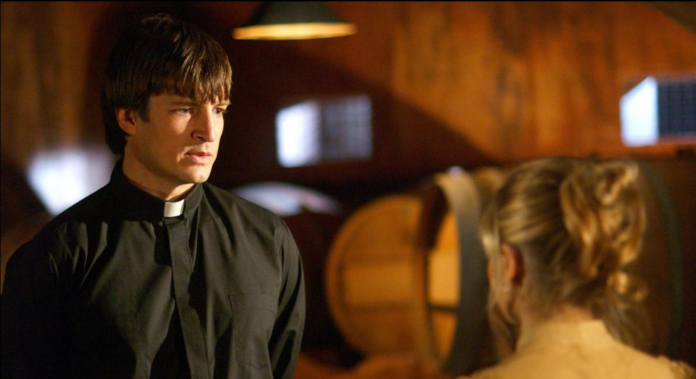Welcome back to Okay, I Finally Watched It, an occasional feature where TWT writers discuss their experience with shows generally considered classics.
In recent months, Joss Whedon has undeniably made numerous appearances in the public eye.
Firstly, he dazzled audiences with Cabin in the Woods, a brilliant horror film that cleverly subverted genre tropes while intertwining them to produce a unique viewing experience.
Following that success, he directed The Avengers, the ultimate outcome of Marvel’s years-long endeavor to construct a film franchise, which emerged as the uncontested champion among the summer’s blockbuster releases.
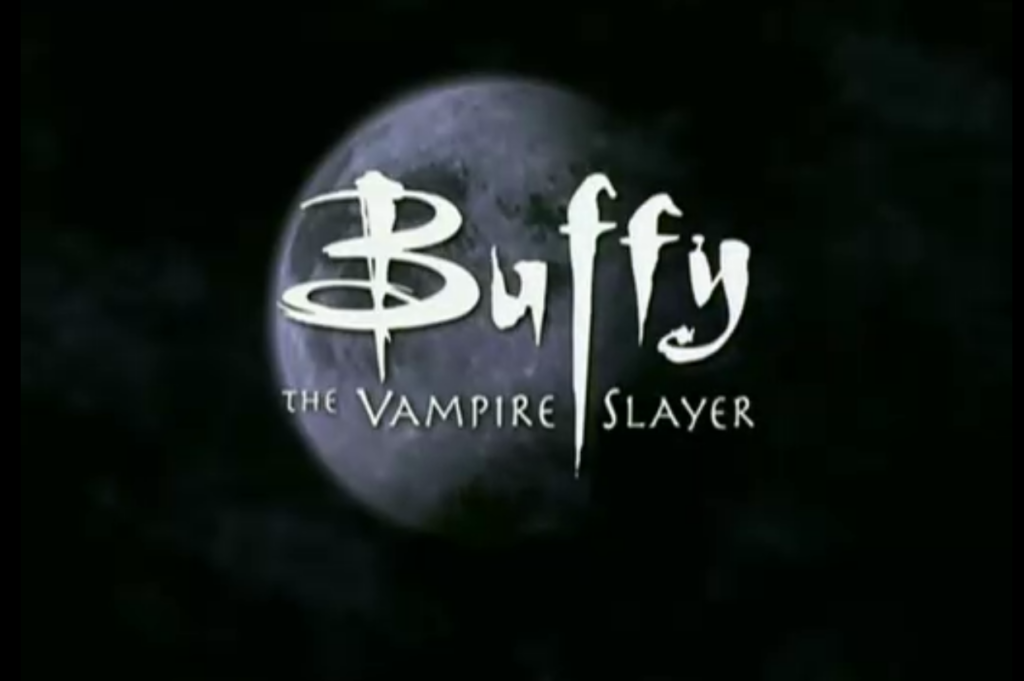
As he advances the development of the S.H.I.E.L.D. pilot for ABC and secures a distributor for his rendition of Much Ado About Nothing, it appears there are few things beyond his creative reach.
This achievement validates many long-time followers of Joss Whedon’s career, although I’ve only been able to grasp it partially.
Over the years, I’ve dipped my toes into some of his work – watching Firefly during my college days with a friend and catching sporadic episodes from both seasons of Dollhouse as they were broadcast.
However, I’ve never truly embraced his writing and creative talent to the extent that those who grew up with his more renowned works have.
Of course, I’m referring to Buffy the Vampire Slayer, the supernatural teen drama that spanned from 1997 to 2003 and profoundly reshaped both genres.
It sparked a dedicated fan base whose devotion often borders on cult-like, and the series still holds a prominent place on most “best of” lists, including This Was Television’s, where our own Cory Barker recently designated it as the top show in UPN/WB history.
I can’t quite pinpoint why I haven’t watched the show thus far, especially considering that I was approximately the right age (12) when it first aired. Moreover, over the 15 years since its debut, my interests have consistently revolved around science fiction and fantasy to some extent.
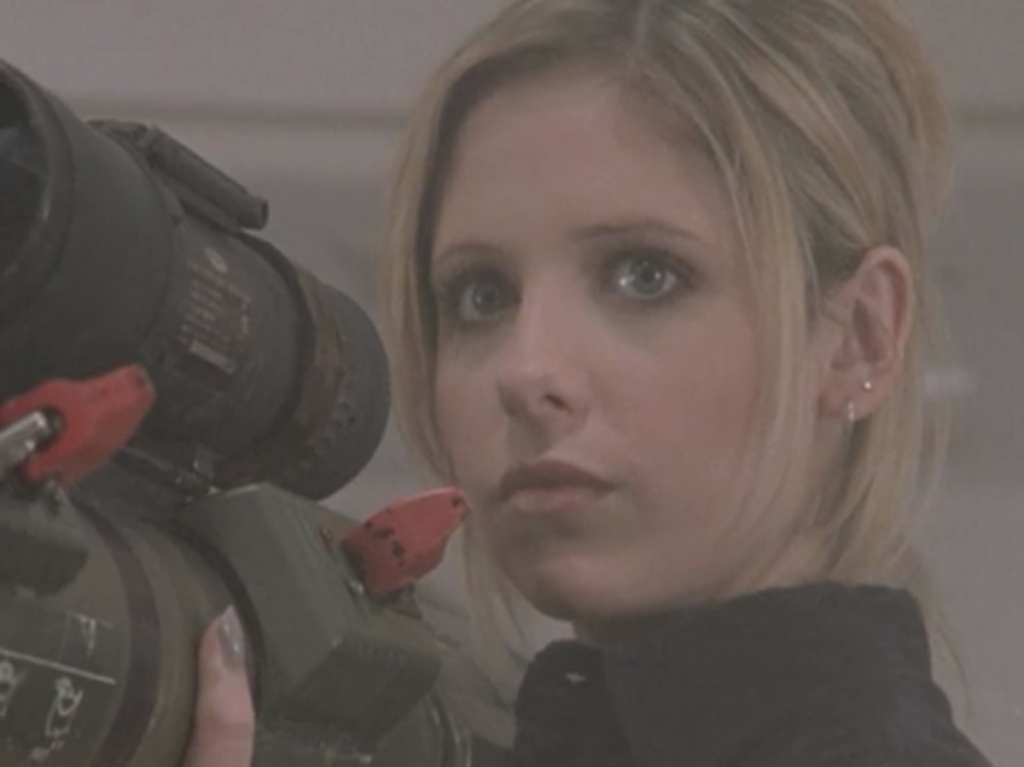
The most plausible explanation for this is a combination of factors: a lack of awareness, as I wasn’t always the enthusiastic TV viewer I am now, and historically, I’ve had a somewhat disdainful attitude toward all teen dramas.
This attitude might be linked to my efforts to suppress memories of my own high school experiences. The few teen dramas I’ve invested time in had to offer something more to captivate me.
For instance, in the case of Veronica Mars, I appreciated the season-long mystery arcs and the approach of solving cases each week, but I remained uninterested in the dynamics of Neptune High.
Motivated by considerable peer pressure from my friends in the Good TVeets community, the easy accessibility of the series on Netflix and Hulu, and Joss Whedon’s astonishingly productive summer, I concluded that the present moment was as good as any to embark on the Buffy project.
Having now journeyed through the first three seasons of the show, allow me to make a declaration to all of you who have been urging me to watch it for months and years:
Yes, you were absolutely right. “Buffy the Vampire Slayer” is indeed a commendable series.
In fact, I would go so far as to call it a great show – perhaps not consistently great, but one that, more often than not, achieves peaks I would have never imagined a show with that title on those networks could reach.
However, it didn’t hit those high points right from the beginning. In fact, it was quite the opposite, to the extent that about half of my Twitter feed assured me that the show improved as I started watching the initial episodes.
Also Read: Women in the Box: Dawn Summers, Buffy the Vampire Slayer
It seemed that as much time was spent making fun of these episodes as praising the show. This isn’t surprising, considering that it was Joss Whedon’s first foray into running a television series.
He chose to reboot his 1992 feature film script after what he perceived as a disappointing outcome. The early episodes exhibit several rough edges, following a “monster of the week” format that ventures into territories that border on campiness, sometimes even approaching the realm of the ridiculous.
For instance, there’s a science teacher who’s revealed to be a giant praying mantis in “Teacher’s Pet,” hyena-possessed students consuming their principal in “The Pack,” and a demon lord being transferred into the Internet in “I, Robot… You, Jane.”
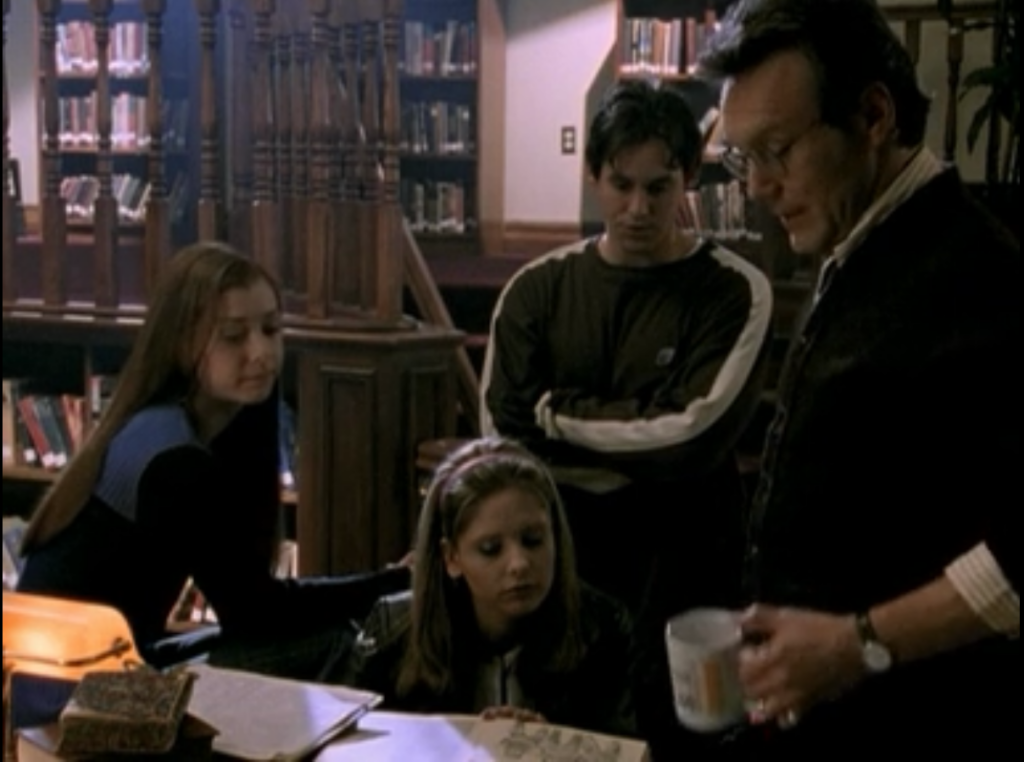
Additionally, the show’s limited budget is evident in some rather dreadful special effects, ranging from poorly executed vampire makeup to CGI that, in the context of the late 1990s, can only be described as laughable (see also: “The Langoliers”).
The laughable aspect is particularly important because, while these early episodes may be somewhat subpar, they at least have the courtesy to be so in an amusing manner.
Simultaneously, there’s an unmistakable core within the show where you can discern glimpses of something more promising trying to emerge. Specifically, the central ensemble exhibits a chemistry that’s evident even in the early episodes, and they progressively become more comfortable in their respective roles over time.
Sarah Michelle Gellar, portraying the titular vampire slayer, consistently delivers a snarky response during battles. However, she also infuses Buffy with an emotional depth that reminds her that a 16-year-old vampire slayer is still just a teenager.
Serving as her mentor, Anthony Stuart Head’s Giles provides a reassuring presence and is always prepared with overly detailed explanations, even if he might not be the best person for operational support.
Among her school friends, there’s a mixed bag of performances—Nicholas Brendon’s Xander has his moments but occasionally seems to overdo the punchlines, while Alyson Hannigan’s Willow is delightfully awkward to the point that making her cry should almost be considered a criminal offense.
*Fun drinking game: take a shot every time Giles gets knocked out. It happens a lot.
Character development also plays a crucial role in shaping the most compelling episodes of the first season.
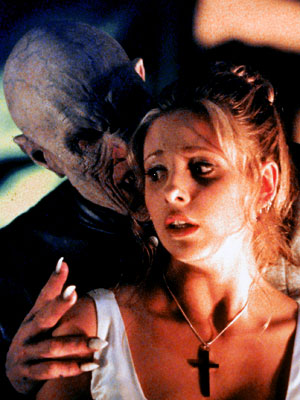
In “Angel,” which unveils the true nature of David Boreanaz’s character, previously shrouded in mystery, a tragic relationship is forged that proves to be far more captivating than anything found in True Blood or Twilight.
“Nightmares” stands out as an outstanding psychological episode, demonstrating that Joss Whedon’s interest extends to delving into the minds of his cast as much as crafting action scenes.
This episode also initiates an exploration of alternate realities, a theme that will gradually evolve throughout the series. Moreover, while my feelings about Xander vary, in the latter episode, he has a momentous scene where he punches a clown, and there’s no denying the humor in that.
The season finale, “Prophecy Girl,” may feature some noticeably dated CGI representations of Hellmouth creatures, but it also delivers remarkable character moments.
Buffy confronts the harsh reality of her mortality as the Slayer, and the Buffy-Xander-Willow love triangle, which had been an annoyance for most of the season, gains some significance.
The concluding line of the episode provides a fitting life philosophy: “We saved the world. Let’s go party.”
The second season of Buffy maintains this trend, although some of the charm of its budget constraints is lost because the show has demonstrated its ability to achieve much more.
When episodes shift away from the primary focus of vampire slaying to delve into other monster metaphors, they become filler material that diverts attention from the overarching mythology’s more riveting and engaging aspects.
Some clear examples include “Inca Mummy Girl” and “Bad Eggs,” which aren’t necessarily laughably terrible; they are simply poorly structured and feature somewhat outlandish concepts.
Additionally, “Ted” stumbles under the weight of being a metaphor for the often complicated dynamics between stepchildren and stepparents.
*Not that laughable badness has completely abandoned the series. Kendra, the second Slayer who first appears in “What’s My Line,” has an accent that should be outlawed. “I am Quiendra, the Vawmphyre Shlayer!”
However, when the show fully embraces its ongoing narrative, it inches closer to achieving greatness. The episodes featuring recurring villains like Spike (James Marsters) and Drusilla (Juliet Landau) are notably more charismatic and intriguing than the standalone installments.
This appeal is partly attributed to the actors’ performances and, in part, to their established history with Angel. Moreover, when the standalone episodes do succeed, they do so by concentrating on character development.
For example, they delve into Giles’s dark and demonic past, known as “Ripper,” in “The Dark Age.” In “Phases,” they introduce a love interest for Willow in the form of the laconic musician-turned-werewolf* Oz (Seth Green).
“Bewitched, Bothered and Bewildered” adds depth** to Cordelia (Charisma Carpenter) by integrating her into the Scooby gang and exploring her budding relationship with Xander.
*Although, it’s worth noting that the werewolf effects, let’s be honest, leave much to be desired. They might not be quite as bad as a gorilla wearing a dog mask, but every time Oz makes an appearance, I can’t help but uncontrollably utter, “Oh no, Oz, you’re a werewolf!”
**A valuable lesson for showrunners: your supporting cast shines when they’re not kept in the dark about the protagonist’s secret life. “Chuck” learned this lesson with Captain Awesome and Morgan, “Grimm” is learning it with Hank, and even “Dexter” seems to be grasping it in its seventh season with Debra.
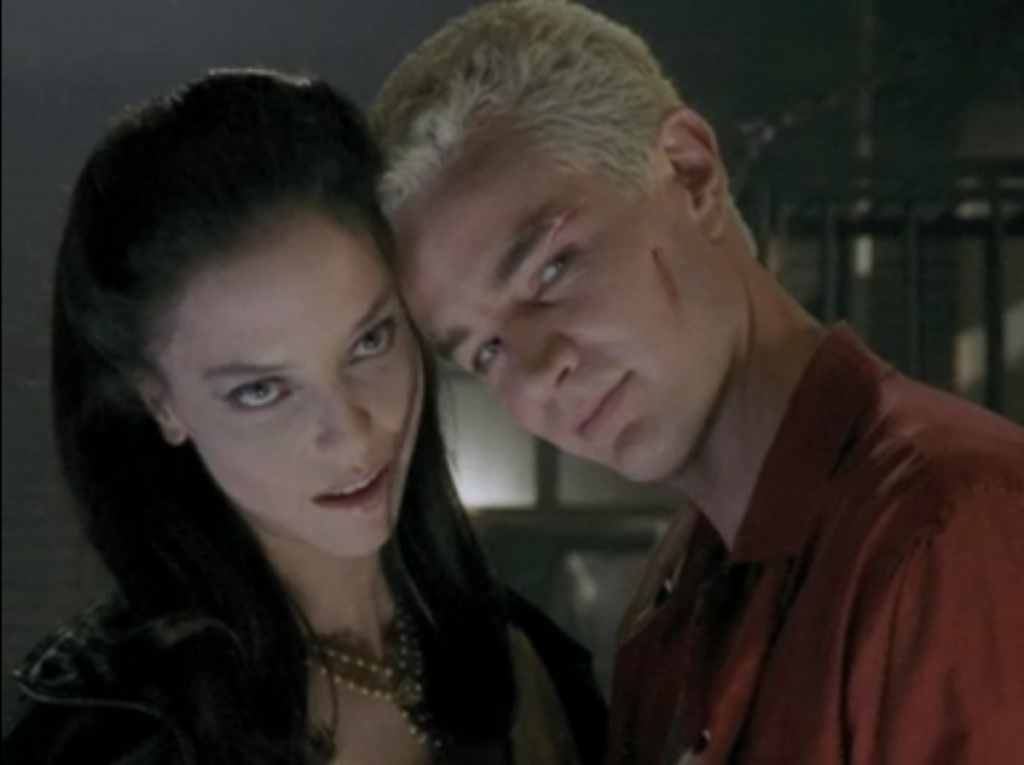
And, of course, there’s the Angelus arc. I didn’t realize until I watched this series that Buffy was the first show to introduce the concept of the “Big Bad,” and they did so in a remarkable fashion.
The decision to turn Buffy’s love interest into the season’s main antagonist was a brilliant move, greatly expanding the Angel character (and David Boreanaz’s acting range) and infusing the show with a raw emotional intensity through Buffy’s emotional turmoil and Angelus’ chilling murder of Jenny Calendar.
The episodes in the latter half of the season were dark and filled with conflict, raising the stakes for Buffy far more than the Master ever did in the first season.
The two-part finale, “Becoming,” left me needing a few moments to process at the end, as it was that emotionally impactful.
After the high of the previous season, I wasn’t entirely sure whether to expect a decline in quality for season three, but it turns out there was no need for such concerns.
While nothing in season three matched the impact of the Angelus/Spike storyline, as a whole, it’s undoubtedly the show’s strongest season.
Both the writers and the actors exude a palpable sense of confidence in what they can deliver, and there’s a rich pool of mythology to draw upon for various references.
Moreover, episodes that were somewhat detached from or only loosely connected to this season’s primary antagonist, the Mayor, didn’t suffer from that distance.
What had previously been a sporadic mix of hits and misses transformed into a consistent lineup of high-quality television hours. “Homecoming,” “The Wish,” “Lovers Walk,” “Doppelgangland,” and “The Zeppo” – I now understand why these episodes are often discussed with great admiration bordering on reverence.
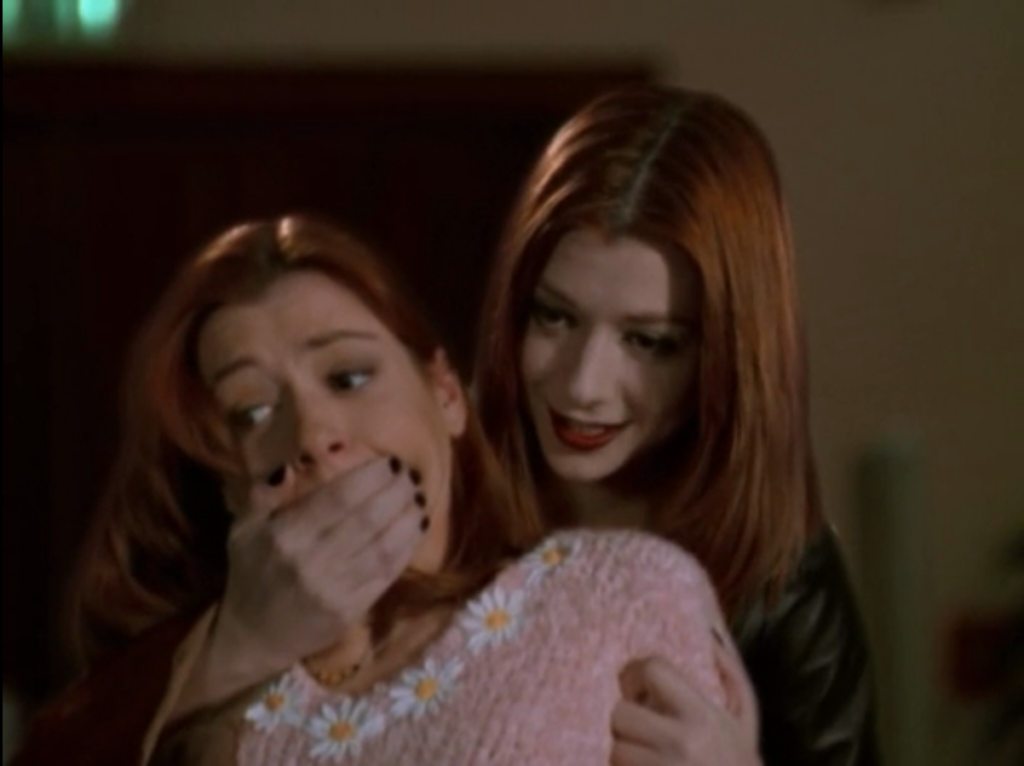
They are smart and profound, yet they’re also exceptionally enjoyable, striking a balance that Joss Whedon’s writing navigates better than most television writers I’ve come across.
What continues to captivate me most about the show is the depth of its character development.
While there were excellent new additions to the ensemble, such as the dark-hearted Slayer Faith (Eliza Dushku), who provided Buffy with another friend-turned-enemy, and the inclusion of Buffy’s mother, Joyce, in the loop, amplifying Joyce’s awesomeness, it’s the transformation of the four central characters that truly stands out.
Buffy’s emotional journey and her struggle to come to terms with the responsibilities of being the Slayer are accentuated, thanks to the return of Angel and the betrayal by Faith.
The secrecy and internal conflict Giles grapples with in “Helpless” hit harder because we’ve witnessed the depth of his care for Buffy. Xander’s side adventure in “The Zeppo” isn’t just structurally interesting; it’s personally rewarding for a character who occasionally grapples with feelings of superfluousness.
Lastly, the Willow we see at the end of “Choices” is a far cry from the Willow we met in “Welcome to the Hellmouth.”
She delivers a speech to her best friend that reflects the profound transformation she’s undergone over three seasons due to the challenges the writing team has put her through:
Actually, this isn’t about you. Although I’m fond, don’t get me wrong, of you. The other night, you know, being captured and all, facing off with Faith, things just kinda got clear. I mean, you’ve been fighting evil here for three years, and I’ve helped some, and now we’re supposed to decide what we want to do with our lives. And I just realized that’s what I want to do. Fight evil, help people. I mean, I-I think it’s worth doing. And I don’t think you do it because you have to. It’s a good fight, Buffy, and I want in.
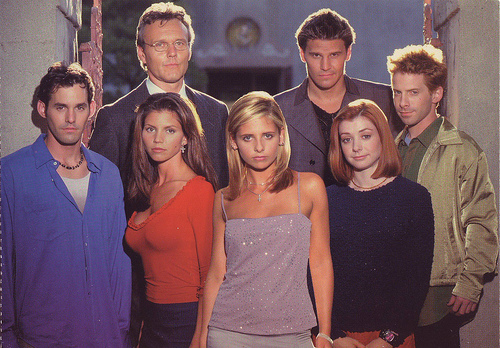
Observing speeches of that caliber and character development like that is what sets “Buffy the Vampire Slayer” apart from all the other teen dramas I’ve dabbled in and ultimately abandoned over the years.
It manages to be tense, humorous, memorable, thrilling, emotional, and, at its zenith, seamlessly shifts between all these moods without breaking a sweat.
Before I watched it, I was perplexed about why everyone was so enamored with the show. Now, I’m left wondering what on earth took me so long to join the fanbase.
Worth the Wait or Overrated?: Worth the Wait
(Addendum: While I’m aware that there are four more seasons of the show, I chose to write this piece now as it appeared to be a suitable transition point. Season three is widely regarded as the series’ best, marking the shift from high school to college. Additionally, it’s the moment when Whedon spun off Boreanaz and Carpenter’s characters into “Angel,” thereby altering the dynamics of “Buffy” to some extent. I understand there’s considerable debate surrounding the following four seasons, and I’d rather abstain from that discussion for now. Depending on the response to this piece, I may revisit the topic once I complete my rewatch and open the floor for discussion later.)


